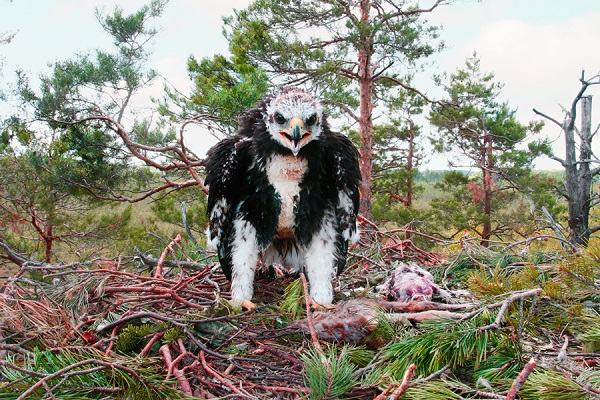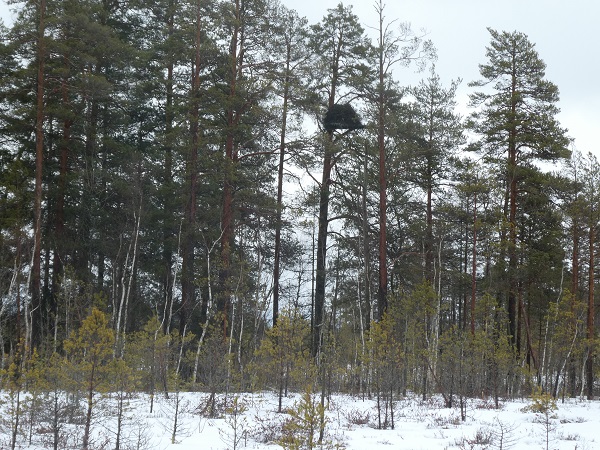Golden Eagles Start Nesting
Although the bogs of the north-eastern part of Latvia are still covered by a thick blanket of snow, some bird species are already preparing for nesting. Uģis Bergmanis, Senior Environmental Expert at JSC “Latvia's State Forests” (LVM), upon inspecting a golden eagle's nest in the north-eastern part of Latvia in mid-February, noticed that a golden eagle – one of the former nesters – had already set up a nest.
“This nest is thoroughly stacked and lined with fresh pine branches. Golden eagles are large birds; therefore, nests must have an easy access. They offer a wide view of the bog, which is the most important hunting habitat,” says Uģis Bergmanis.
The golden eagle is a resident bird that stays in the nesting area all year round, mates in February and lays eggs in March. Golden eagles build nests on islands and peninsulas of large bogs, usually pines. These nests are large and sometimes up to a metre thick.
Eagles of this species feed on birds nesting in swamps such as grouses, woodgrouses, ducks, cranes, and waders. Mammals and their pups – martens, badgers, foxes, raccoon dogs, as well as deer – also play an important role in their feed. In winter, eagles feed on dead animals.
JSC “Latvia's State Forests” in cooperation with experts of the Latvian Fund for Nature monitors golden eagles, as well as builds artificial nests to strengthen the population. Although the number of nesting couples is small, the number of golden eagles has been increasing in recent decades. In Latvia, about ten pairs of golden eagles nest in the bogs of Latgale, Vidzeme and Kurzeme.




